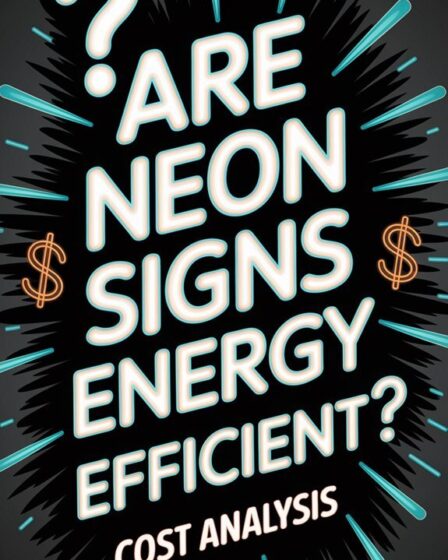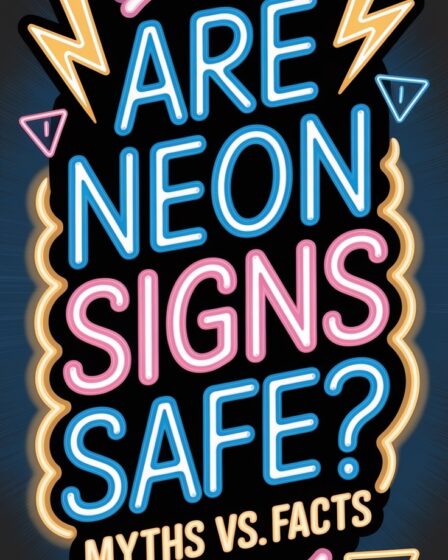Neon signs use just 3-5 watts per foot of tubing, consuming 50-70% less electricity than LED displays at similar brightness levels. Annual electricity costs range from $100-300, while yearly maintenance runs between $50-200. Replacement components typically cost $200-500 every 8-12 years, though timers and dimming controls can improve efficiency. Strategic placement and regular maintenance help …
guides
How Do Neon Signs Work? Complete Guide
Neon signs operate by passing electrical currents through glass tubes containing noble gases. When electricity flows through the sign, electrodes excite the gas molecules, creating photons that produce signature colors – pure neon glows red-orange. These carefully crafted glass tubes bend into custom shapes and designs, making storefronts and spaces visually striking. The complete process …
What Are Neon Signs? History, Types & Uses
Neon signs combine electrified noble gases in glass tubes or LED alternatives to produce bright, eye-catching displays. These luminous creations have illuminated storefronts, art installations, and decorative spaces since Georges Claude’s 1902 invention. Three main varieties exist: traditional gas-filled tubes, energy-efficient LED strips, and custom designs featuring personalized artwork. Craftsmen shape glass tubes, fill them …
Are Neon Signs Safe? Myths vs. Facts
Neon signs are safe when properly installed and maintained by professionals. Modern neon signs feature essential safety components including circuit breakers, protective coatings, and automatic shut-off systems. Though they use higher voltages than LED options, correct installation and upkeep minimize potential risks. Pure neon gas poses no danger, while sealed tubes prevent any exposure concerns. …




